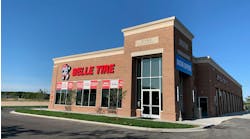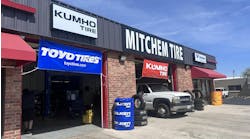For a new client, we recently had to spend a bit of time up front explaining how escrows work in M&A transactions and why they exist. The client was rightly concerned about a portion of his eventual selling price being tied up indefinitely — or even worse, never being released.
One typically sees escrows in two areas: working capital and in enforcing a seller’s representations and warranties.
In both cases, some part of the purchase price is put up in cash by the buyer at closing in an interest-bearing account. It’s released at a time when it’s clear that either the working capital target that both parties agreed to has been met or when it’s clear that no misrepresentations or unexpected problems will arise that end up costing the buyer money.
Working capital escrows work in this way. A target working capital amount that needs to be left in the business is determined for the transaction. At closing, some reasonable percentage of the target working capital from the transaction proceeds is put into an escrow amount.
Ninety days post-closing, after all the bills are in and the closing inventory has been finalized, the buyer calculates what turned out to be the “actual closing working capital” and sends this to the seller for his review and approval.
If both agree on the number and if the closing working capital is greater than the target working capital, the buyer wires that difference to the seller and instructs the escrow agent to release the escrow.
If the closing working capital is less than the target working capital, the buyer can deduct the deficiency from the escrow and the remainder is released to the seller.
Other escrows typically take longer to be released. These always relate to the perceived risk of a company by a buyer. In the case of our new client that I refer to above, he has a 75-year-old, thriving business. The good thing about a 75-year-old business is that it’s likely going to be around for quite a bit longer. The bad thing about a 75-year-old business is buyers worry about hidden issues from long ago that will come back to bite them.
That’s why sellers are often required to sign off on and attest to a laundry list of issues at a closing. These are called representations and warranties.
In one current transaction for a 50-year-old business, there are 27 items that our seller attested to, including environmental matters, personnel, litigation, tax matters, financial statements, customers, suppliers, accuracy of financial statements, permits, real property, intellectual property, material contracts, employee benefits, no material changes to the business and more.
Five months of due diligence was performed by the buyer on each of the 27 issues and on the business itself.
The purchase agreement covering reps and warranties was about 20 pages of legalese. Note to sellers: you need to be prepared to endure all of that.
With regards to escrows related to reps and warranties, we try to limit the amount to 10% of transaction value or less. We also try to limit the length of time that the cash is held. We’re usually able to arrange the release of half the escrow in six months if it’s a 12-month escrow or nine months if an 18-month escrow; with the remainder released at the end of either 12 or 18 months.
The way we see it, release of escrow is 100% under the control of the seller. We advise clients to make sure they disclose anything that might pop up and to be transparent and honest.
The one time escrow was not released in a transaction that I was involved in was because significant misrepresentations were made by a seller. In that instance, the escrow was taken by the buyer and the seller paid more on top of that. So except for that one case, we find that when there is trust between a buyer and seller — and if the attorney crafts the escrow release language properly — the escrow will be released.
A solution to avoiding this type of escrow and to feeling good about attesting to everything is to get representation and warranties insurance. Like it sounds, reps and warranties insurance protects both the buyer and seller if an unforeseen problem arises. Financial investors such as private equity groups really like this extra layer of protection. The other advantage is that there is no escrow in the transaction. It’s one less thing to negotiate and none of the seller’s money is tied up.
There are several companies that specialize in this type of insurance. In our experience, it costs about 1% of transaction value and this cost is usually split between a buyer and seller.


